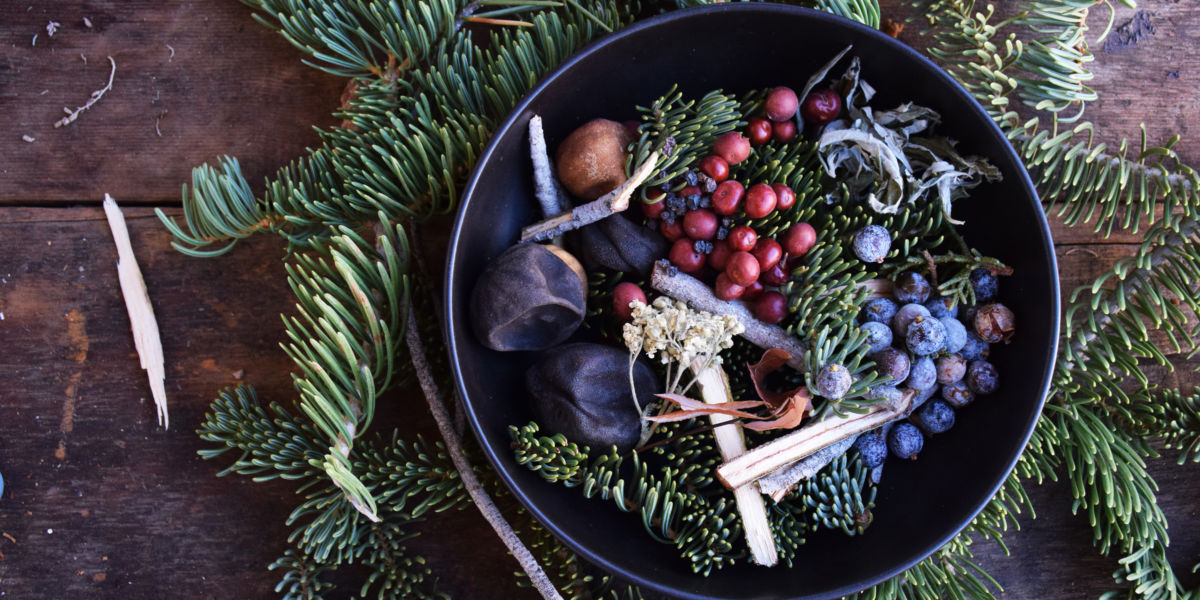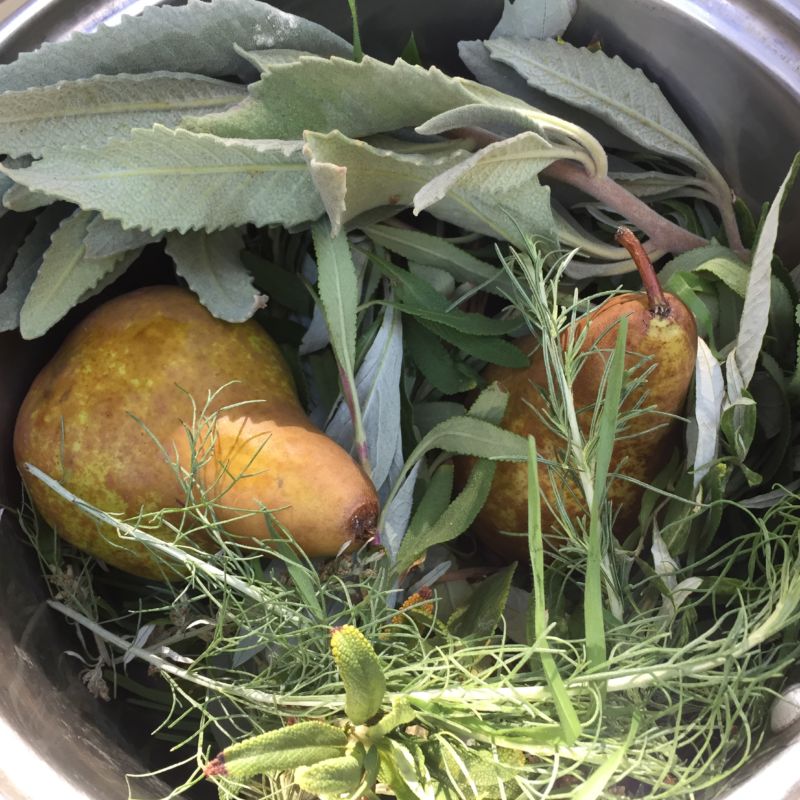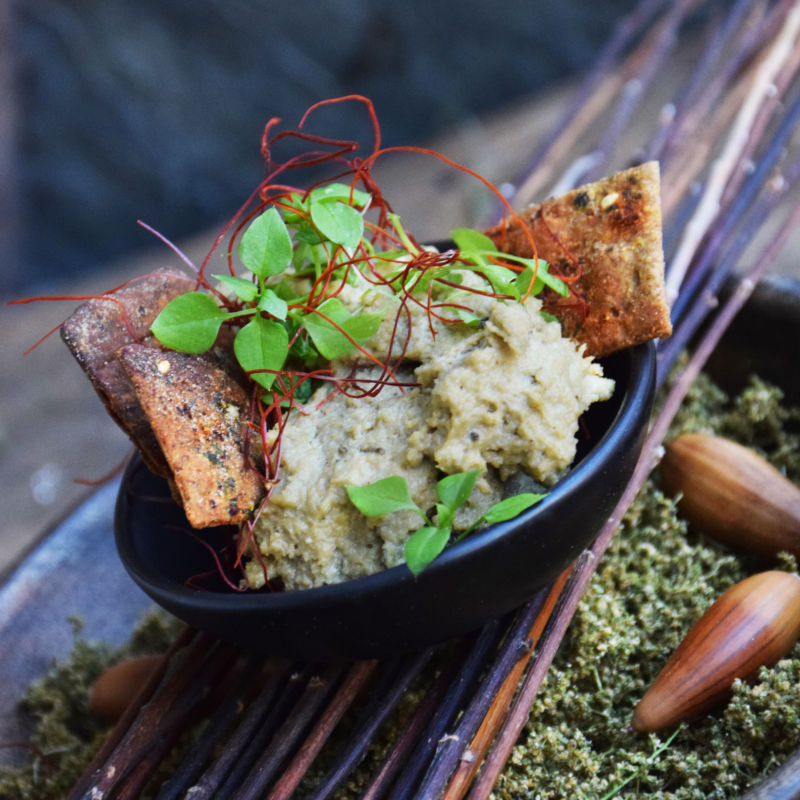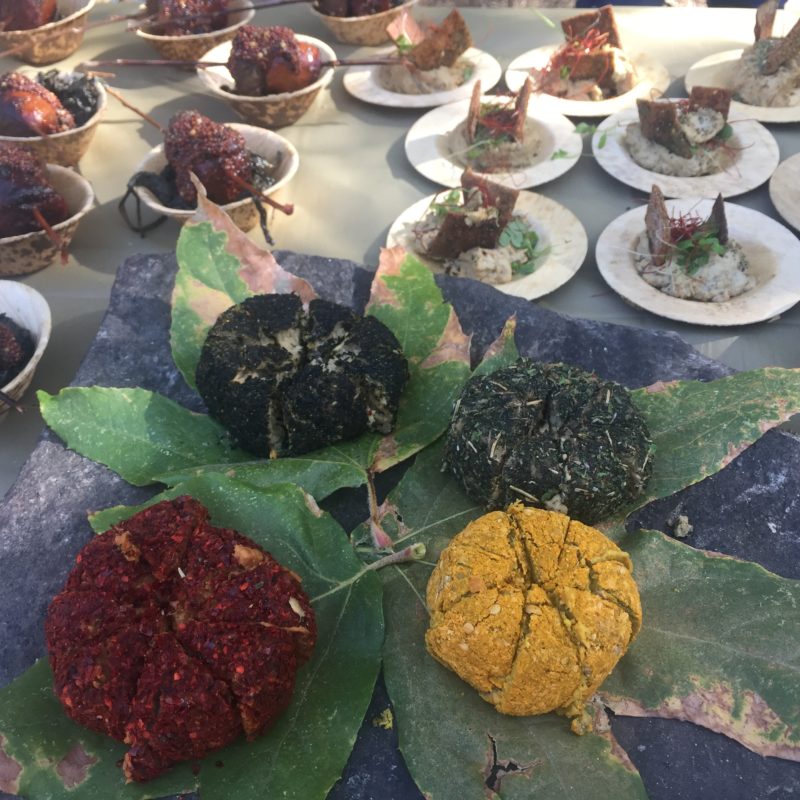
The Wildest Meal in the West Is Absolutely Free. There’s Just One Catch …
You’ll have to hunt and harvest this five-star meal yourself

When a gaggle of five-star hotel guests’ Gucci-clad feet pop out of a white passenger van and touch down on a dusty corner of the Angeles National Forest, the terrain might as well be Mars. Their wide eyes dart up to a dry, seemingly barren forest of scraggly live oak and eucalyptus, then swivel to their guide, a slender Belgian-American man clad in worn blue jeans, a white cap, and wire-framed glasses. But Pascal Baudar is already striding away from them toward a hillside, shaking some stalks of wild fennel into his hand and depositing the golden pollen that falls from it in a jar.
Those little nuggets of gold will be lunch today for the SLS Beverly Hills Hotel guests, each of whom has paid $1,700 for the “Be Epicurean” package, which reserves them the privilege of two very personal days with culinary luminaries such as Baudar and acclaimed modernist restaurant Somni’s chef, Aitor Zabala.
It’s a small price for these guests to pay, since they’re culinarily-obsessed—the kind of gourmands who jet the globe on weekends to tick off another of the World’s 50 Best Restaurants, the kind of luxury diners who are on a first-name basis with reservationists at Michelin-starred restaurants.
It’s one thing, however, to ensconce yourself at the sleek 10-seat semi-circular dining table that faces Somni’s clean, open kitchen and delicately ingest 20 courses of, say, truffle-marinated caviar on a mannequin hand and Shigoku oyster aguachile; and quite another to hunt for weeds like a prehistoric forager in the dusty wilderness of the San Gabriel Mountains.
In the quiet of the forest, Baudar’s gentle voice describes one of the most abundant flowers of the super bloom, a cheerful four-petaled yellow flowering stalk that was recently called “pretty dangerous” and a fire hazard by the Los Angeles Times. This six-foot-tall plant, black mustard, has taken root and spread rapidly from Santa Monica to Pasadena after this past winter’s rains. It was named one of the “Evil 25” invasive “bully plants” by the National Parks Service—a misnomer, in Baudar’s opinion.
“A plant is not evil,” the forager says. “It’s one of the most edible plants, and the parks call it evil and spray it with pesticides. We need a new narrative on invasive edible plants, because there’s no way people can look at them as beneficial if we have that narrative.”
Though the guests look unsure that this yellow-flowered weed could contain anything edible, Baudar pockets the seeds from the plant and pops a couple of the spicy flowers in his mouth, encouraging the guests to try them, which they do with uncertain expressions, their eyes widening at the extreme spice. The rest of the flowers they gather will adorn dishes the guests cook later.

Baudar leads the group to a patch of sage and has them pick the fuzzy, strong-smelling leaves and sniff them. “L.A. is the land of sages,” he proclaims. “There are so many different aromatics you can use for spice blends, it’s incredible—black sage, white sage, sagebrush, California bay. This is the land of aromatics, and I don’t see anyone in L.A. using them from a modern-yet-old perspective: canning, pickling, fermenting.”
Surely everyone has heard of the next plant, Baudar says, but not everyone recognizes the green jagged leaf without its bright yellow bloom that has come in vogue at top restaurants from Noma to n/naka. “Dandelion has a bit of a bitter flavor, which Europeans and Americans are not used to,” Baudar says. “The best dish is really like they do in Korea—boil it, add fermented pepper paste, soy sauce, seasoning oil, sesame seeds, to make a dish out of it.”
Baudar, who has foraged for the kitchens of L.A.’s most elite chefs, including José Andrés, Ludo Lefebvre, and Niki Nakayama, has supplied them and their high-paying guests with strong flavors from fennel stems, wild radishes, dandelions, and chickweed. But he’s no chef, he says. Without any formal training, he has persistently experimented as a cook for decades, since his childhood in Belgium foraging nettles and walnuts for his grandmother. Through his experiments, he has published two books, The New Wildcrafted Cuisine: Exploring the Exotic Gastronomy of Local Terroir, and The Wildcrafting Brewer: Creating Unique Drinks and Boozy Concoctions from Nature’s Ingredients.

Dakota Kim
His next book, which he is currently writing and traveling across North America to research, focuses on how to forage sustainably, helping the environment by collecting invasive and non-native wild plants.
“I see the hotel guests realize that you are absolutely surrounded by ingredients for food,” Baudar says. “It’s knowledge that’s pretty much lost by this point, since it’s really an oral tradition from person to person. I’m writing my new book…because I don’t want the knowledge to be lost anymore.”
Food waste is an issue that has propelled Baudar, as it has José Andrés, the chef-activist in charge of the SLS’s culinary program. “The parks’ solution is either chemicals and pesticides, or throwing these plants away, which if you have knowledge of edible plants like I do, it drives me wild because it’s food waste, and the flavors are fantastic.” Baudar says he has lost five miles of prime foraging ground because of the city’s spraying of Roundup, a toxic pesticide. Baudar says he admires Andrés’ activist efforts in reducing and reusing food waste.

But Baudar is a realist—though he says he could go 100 percent wild food, only 20 percent of his diet is foraged. “I’m not an extremist, and I’m not saying you can’t spray pesticides, but I just want wild food to be part of the solution—I want people to realize that we are surrounded by food and you can use foraging as a way to help the environment,” Baudar says. “It’s easy to do when hiking, and things like dandelion and mustard are easy to recognize. You can create gourmet food and it’s completely free.”
Armed with his books and a little persistence for wild adventure, you can skip the fancy dinner reservation and make your own high-end meal despite your own lack of formal training. “Wild food is gourmet food,” Baudar says. “It’s a different kind of gourmet food from what you get in restaurants, but it’s gourmet because it’s packed with flavor, as opposed to what you’ll get at the store. The average American palate is not used to very strong flavors, but after the tour, guests want to research wild food and experience more gourmet flavors of the forest.”

Baudar puts the SLS Hotel guests to work preparing a wild gourmet meal worthy of a Michelin star. Waving his hand at them liberally, he encourages them to pick and light a camp stove at a picnic table and begin experimenting. “Go, yes, try it,” he exclaims.
One guest is stirring fragrant mugwort, sagebrush, black sage, and yerba santa leaves into mountain maple syrup, which Baudar has aged with pine and juniper berries, while another guest roughly slices pears from the market with a small blade on a paper plate, adding them to the heady maple brew. Another nascent forager cook sautées wild foraged greens and grasshoppers with mushrooms and mustard seeds. One culinary artist, lost in careful arrangement, plates colorful lacto-fermented acorn cheeses on leaf-layered bark cheese boards, garnishing them with earthy chickweed salad greens and long strands of witch’s hair. Wild seed and pollen crackers Baudar made with oak ashes from last year’s California fires are gently perched into and next to the cheeses.

Soon, guests are unabashedly heaping the “dandikraut,” a dandelion sauerkraut, onto their plates from a tree crock Baudar made from a hollowed-out trunk so he could add an oaky flavor to his fermentation process. They’re sprinkling the yellow mustard flowers liberally onto their slices of cheese and crackers, and guzzling tin cups of horehound and mugwort beer. The flavors are so strong, some guests are making shocked faces, but it’s a reaction Baudar is used to.
“They feel better; they feel more awake, because face it—the modern state of food is dead food,” he says. “It’s boiled, canned and pasteurized to such a level that there’s nothing alive left. This reconnects you to a new flavor, but it’s not really new, it’s old—reminding you of your ancestors who connected with nature and wild food, beers, and wines from 2,000 years ago. Wild mugwort wines are not going to taste like Beaujolais, but the DNA memory of these foods is attractive to us.”
